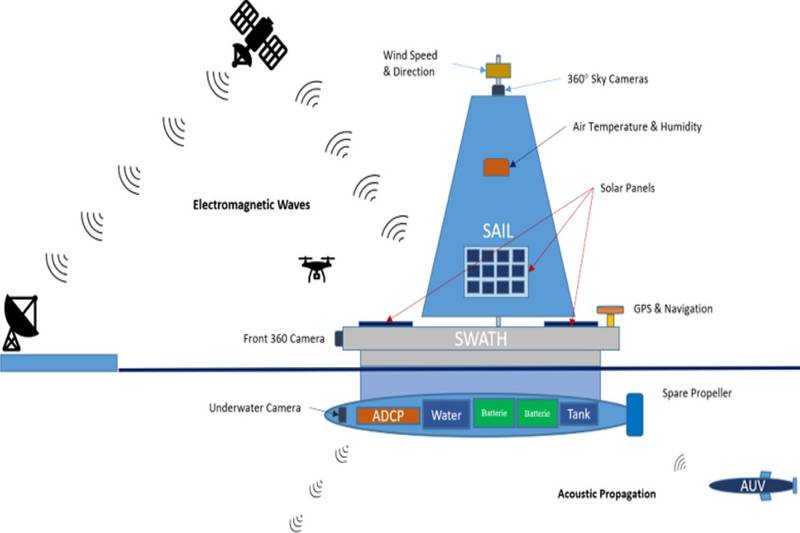Long-term data collection is needed to understand Arctic marine ecosystem changes as sea ice melts in response to climate change.
However, direct observation is challenging as satellite sensors have a coarse spatial resolution and cannot detect the fine fractal structure of the ice. Deploying human-crewed ships to the area also is difficult due to extreme weather conditions and risks posed by floating broken ice. Moreover, traditional ocean observation methods offer limited temporal and spatial coverage, while drones and AUVs are hindered by energy constraints that restrict their research potential.
To overcome these challenges, researchers from the College of Engineering and Computer Science at Florida Atlantic University have proposed a design of an alternative, autonomous observational method that features a small waterplane area twin hull (SWATH) vessel that acts as a docking and charging station for AUVs and UAVs.
The SWATH ship is engineered for exceptional stability, allowing it to navigate through melting ice and operate in a wide range of sea conditions. It is designed to be self-sufficient, utilizing automated sailing, solar panels and an underwater turbine positioned between its twin hulls to generate and store energy, ensuring continuous mission support even when sailing against ocean currents.
Results of the study, published in the journal Applied Ocean Research, show that using the motion of a wind-driven sailboat to generate power from the turbine beneath the SWATH is a feasible way to support long-term Arctic Ocean monitoring missions.
The UAVs use high-resolution cameras and sensors for mapping and navigation, while AUVs gather underwater data. The DJI Dock 2 system enables UAVs to autonomously land, recharge and redeploy, while an advanced underwater docking system allows AUVs to refuel and transfer data, extending their range. Survey instruments in the underwater hulls collect mission-specific data, which is processed onboard and transmitted via satellite, enabling long-term, unmanned ocean monitoring.
“Our researchers have developed an innovative observation system tailored to the Arctic environment, offering critical data on sea ice melt that satellites and manned vessels are unable to capture. Long-term monitoring is essential, as it provides deeper insights into the lasting impacts of Arctic sea ice loss, which can guide informed policy and management decisions,” said Stella Batalama, Ph.D., dean of the FAU College of Engineering and Computer Science. “Additionally, there remains much to uncover about Arctic phytoplankton and algae, which play a crucial role in the food web and influence ocean-atmosphere interactions. This new system could enhance our scientific understanding of their ecological significance while supporting Alaska’s indigenous communities in adapting to future changes in wildlife and food resources.”

